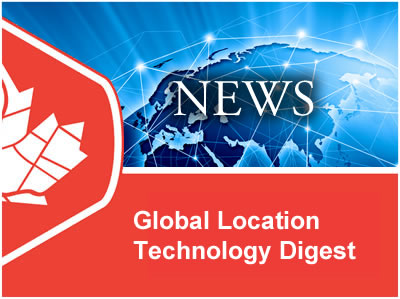
Blockchain needs to step up security
Cryptocurrency is far from immune to attack—and as it turns out, some have security flaws built right in. Since 2017, sophisticated hackers have stolen nearly $2 billion worth of cryptocurrency, likely because blockchains present attractive targets to thieves: fraudulent transactions can’t be reversed, smart contract bugs can cause massive emergencies in software, and the more complex a blockchain system is, the more mistakes can be made in the process of setting it up for use. AI and “bug-bounties” might help stem the tide of attacks, but someone somewhere will always try to game the system; though long touted as “unhackable”, block chain is anything but.

Ordnance Survey focuses on data
Ordnance Survey’s Chief Data Officer is leveraging location data to match the huge demand for the mapping agency’s 500 million geographic features. Caroline Bellamy’s appointment is unique in the 228- year history of the agency, and a sign of the rapid growth in third-party users of mapping data. “The position was created to have a very specific focus on data, and not purely from the geospatial perspective, but with a wider mix and brief that data is being utilised in ways that one would never have imagined less than a year ago in some cases,” Bellamy told CIO UK. A big part of the strategy will involve developing a more open geospatial data infrastructure that focuses on accuracy and accessibility
What’s next for geospatial?
In 2018, the geospatial industry seemed to be riding a high of optimism and confidence in the future. There is increasingly a sense of “now or never”, however: the urge to seize opportunities to stay relevant in the midst of technology disruptions (the majority of these coming from outside the industry). According to surveys performed by Geospatial World, business leaders see integration of AI, machine learning, and Big Data as the next big splashes in the sector, and they are also facing challenges ranging from shifting customer loyalty to data privacy issues. The majority of business leaders, however, see optimal use of data analytics and predictive technologies as the biggest challenges facing the industry—as well as focusing on collaboration rather than competition.
Transportation innovation is driving Smart Cities

Prioritizing transportation initiatives is essential to increasing operational efficiency in Smart Cities. In an effort to encourage American states to adopt Smart transportation, the US DOT’s Smart City Challenge launched in 2015, offering $350 million in funds towards advanced transportation technology. Many of the projects involved aimed to solve urban mobility challenges like connecting under-served communities to jobs, moving goods, improving parking, and integrating data collection in various systems. Singapore has placed a huge emphasis on transportation innovation by embracing autonomous vehicles, and in recognition won the Smart City of 2018 award at Smart City Expo World Congress. Leveraging transportation innovation and technology platforms that embrace open architecture principles are the road to the future.
Anti-drone solution by MyDefence
MyDefence is introducing a modular anti-drone solution for airports, prisons, and military bases called KNOX. KNOX is a customizable end-to-end system with purpose-built RF sensors, drone radars, and integrated EO/IR for visual tracking. Available for commercial use at airports, prisons, military and critical infrastructure, KNOX fortifies an area against unauthorized drone flights, and ultimately stops drone threats. The modularity of the software suite allows for the anti-drone system to be integrated into existing security systems and requires less operational training for a more open platform, better accommodating the needs of customers.




Be the first to comment